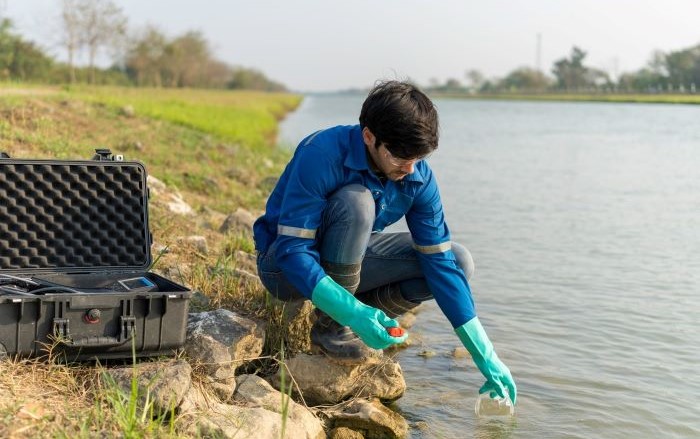Improving the Conservation of Otters through Technology
To combat the climate and biodiversity crises, it is widely acknowledged that we must do more globally to protect habitats and species.
Our Edinburgh Napier Centre for Conservation and Restoration Science is an interdisciplinary research centre committed to delivering innovative science and solutions to help conserve, rebuild and enhance biodiversity across terrestrial, freshwater and marine ecosystems.
Problem:
Eurasian otters are listed as near threatened on the global IUCN Red List of Threatened Species. They are legally protected across Europe and the UK and this includes their den sites. Ecological consultants have a key role in surveying sites for protected habitats and species, including otters. It was recognised in the industry that new evidence-based survey methods were required to find and identify otter den sites used for resting and/or breeding.
Solution:
Edinburgh Napier University partnered with Findlay Ecological Services to develop evidence-based camera trapping protocols to better identify and protect otter dens, including detailed guidance on what settings to use, how to place camera traps, when, and for how long.Optimising, through technology, the monitoring of protected otter den sites
Eurasian otters (Lutra lutra) have large home-ranges and numerous den sites. It can therefore be challenging for ecologists to determine exactly how they are using their habitat – for example, which sites they use for resting, when, how often and which sites are crucial for breeding.
Traditionally, the approach ecologists took to surveying sites for otters used field- signs such as scent marks, paths and footprints, however there were no guidelines on how to confidently corroborate or rule out a site as a den site. This has made it difficult for ecologists surveying a development site to decide how best to mitigate impacts on otters.
Access to multidisciplinary experts gave credibility to research
To provide a more tangible, evidence-base to the surveying of otter den sites, conservation experts from Edinburgh Napier University partnered with Findlay Ecological Services to develop and test the use of camera trapping technology to provide a robust tool for ecologists to identify otter resting and breeding sites that need to be protected.
Camera-trap data and field-sign observations were collected across the River Tweed catchment in Scotland from 26 potential den sites, each monitored for a minimum of a year during a five-year period, gathering significant film footage of how otters use these sites. In addition, an otter breeding site was monitored intensively for six years and camera-trapping trials were carried out on a captive otter population to investigate what factors influence capture of footage.
The project partnership is currently working to translate the research findings into clear guidance for practitioners and stakeholders. It is envisaged this new evidence-based surveying approach, using camera trapping technology, will not only support the future work of ecologists, but will help protect otters and their habitat for years to come.

